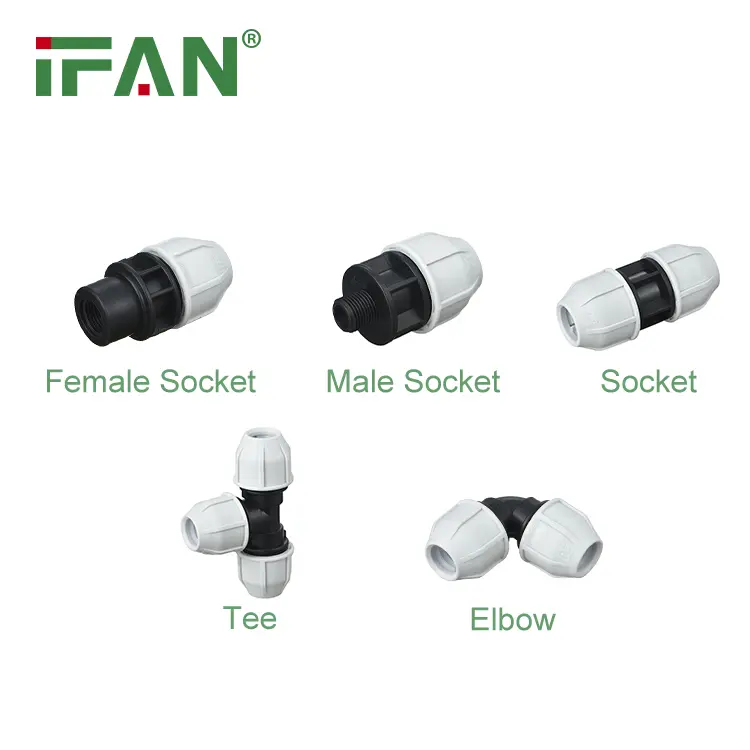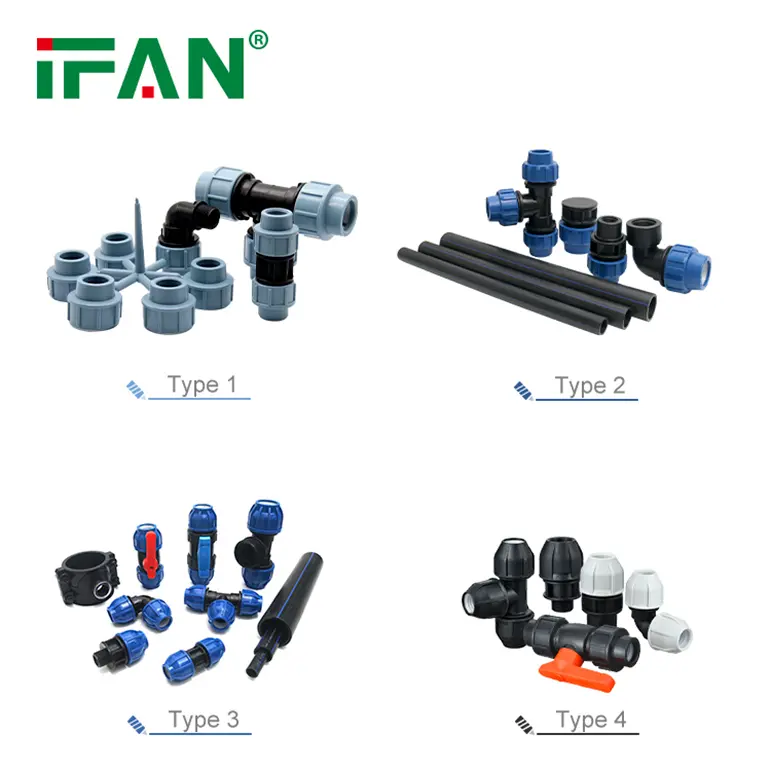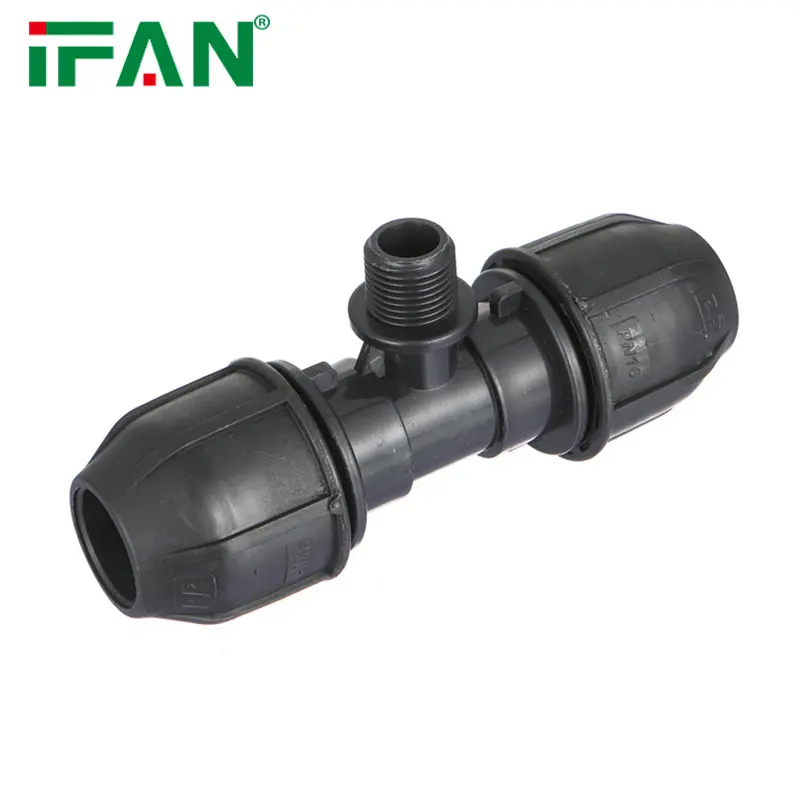1. Introduction to PP Fittings
PP (Polypropylene) fittings are widely used in various piping systems due to their chemical resistance. They are made from a thermoplastic polymer known for its durability and resistance to chemical attacks. Understanding the chemical resistance of PP fittings is crucial for ensuring their performance in different applications.
2. Chemical Structure and Properties
Polypropylene is a polymer made from the monomer propylene. Its chemical structure consists of repeating units of propylene, which provides it with high resistance to many chemicals. The absence of double bonds in its structure helps prevent reactions with corrosive substances. This makes PP fittings suitable for handling a variety of chemicals.
3. Resistance to Acids
PP fittings exhibit excellent resistance to a wide range of acids. This includes both strong acids like hydrochloric acid and sulfuric acid, as well as weaker organic acids. For example, in a chemical processing plant, PP fittings are often used to transport hydrochloric acid due to their resistance to corrosion and degradation by the acid.
4. Resistance to Alkalis
Polypropylene also performs well when exposed to alkaline solutions. It resists degradation from strong bases such as sodium hydroxide and potassium hydroxide. In industrial settings, PP fittings are commonly used in applications involving caustic soda solutions. Their resistance to alkalis ensures that they maintain integrity and function effectively over time.
5. Resistance to Solvents
PP fittings have varying degrees of resistance to organic solvents. While they are resistant to some solvents like alcohols and ketones, they may not be suitable for all types. For example, PP fittings generally perform well with solvents like ethanol but might not be ideal for strong solvents such as acetone. It is crucial to evaluate the compatibility of PP with specific solvents based on application requirements.
6. Performance in High Temperatures
The chemical resistance of them can be affected by high temperatures. While PP can handle moderate temperatures, extreme heat may impact its chemical resistance. For applications involving elevated temperatures, such as in hot chemical processes, additional considerations or alternative materials may be necessary to ensure long-term performance.
7. Resistance to Oxidizing Agents
Oxidizing agents such as chlorine and ozone can affect the chemical resistance of them. While PP generally has good resistance to many oxidizing agents, prolonged exposure can cause degradation. For instance, in water treatment applications where chlorine is used, PP fittings can be suitable, but careful monitoring is required to ensure they do not degrade over time.
8. Resistance to Organic Acids and Bases
PP fittings are resistant to many organic acids and bases, making them versatile for various applications. They can handle substances like acetic acid and citric acid without significant degradation. In the food and beverage industry, PP fittings are used in systems dealing with organic acids due to their chemical stability and safety.
9. Environmental Stress Cracking
Environmental stress cracking (ESC) can affect the chemical resistance of them under certain conditions. ESC occurs when PP is exposed to specific chemicals while under stress, potentially causing cracks. To mitigate this risk, proper material selection and stress management during installation are essential to ensure the longevity of them.
10. Comparison with Other Materials
When compared to other materials like PVC or metal, PP fittings offer superior resistance to certain chemicals. For instance, while metal fittings might corrode when exposed to acids or alkalis, PP fittings generally remain unaffected. However, for very aggressive chemicals or high-temperature applications, alternative materials might be required.
11. Application Examples
PP fittings are used in various industries due to their chemical resistance. In the pharmaceutical industry, they handle acidic and alkaline solutions during drug manufacturing. In the chemical industry, PP fittings transport a range of chemicals, including acids, bases, and solvents, without compromising performance.
12. Impact of Chemical Resistance on System Design
The chemical resistance of them influences system design and material selection. Choosing the right fittings for specific chemical processes ensures system reliability and safety. For instance, using them in a system designed to handle strong acids or bases prevents premature failure and maintains operational efficiency.
13. Testing and Certification
Testing the chemical resistance of them is essential for verifying their suitability for specific applications. Various standards and certifications, such as ASTM and ISO, provide guidelines for testing and ensuring that PP fittings meet the required chemical resistance criteria. Proper certification helps confirm that the fittings are reliable for their intended use.
14. Environmental and Safety Considerations
When using PP fittings in chemical applications, environmental and safety considerations are crucial. PP’s chemical resistance helps reduce the risk of leaks and spills, which can have environmental impacts. Ensuring that fittings are used correctly and maintained properly further enhances safety and environmental protection.
15. Summary
In summary, PP fittings offer excellent chemical resistance, making them suitable for a wide range of applications. Their resistance to acids, alkalis, and many solvents ensures their reliability in various industries. However, their performance can be affected by high temperatures and oxidizing agents. Proper material selection, testing, and certification are essential for ensuring the effective use of them in chemical processes.
If you have read this article and have any questions, please feel free to contact IFAN. Below is our contact information:
Whatsapp:+86 13373827623
Email:[email protected]
























































